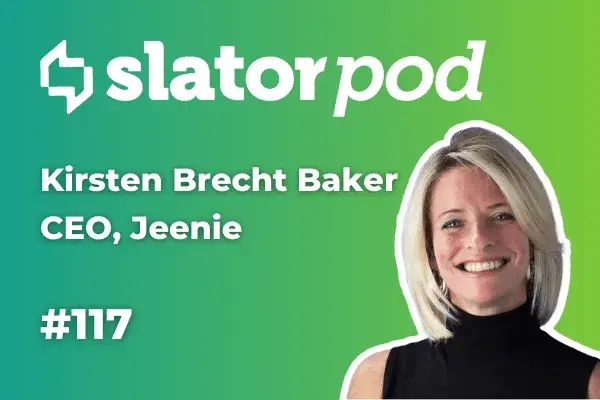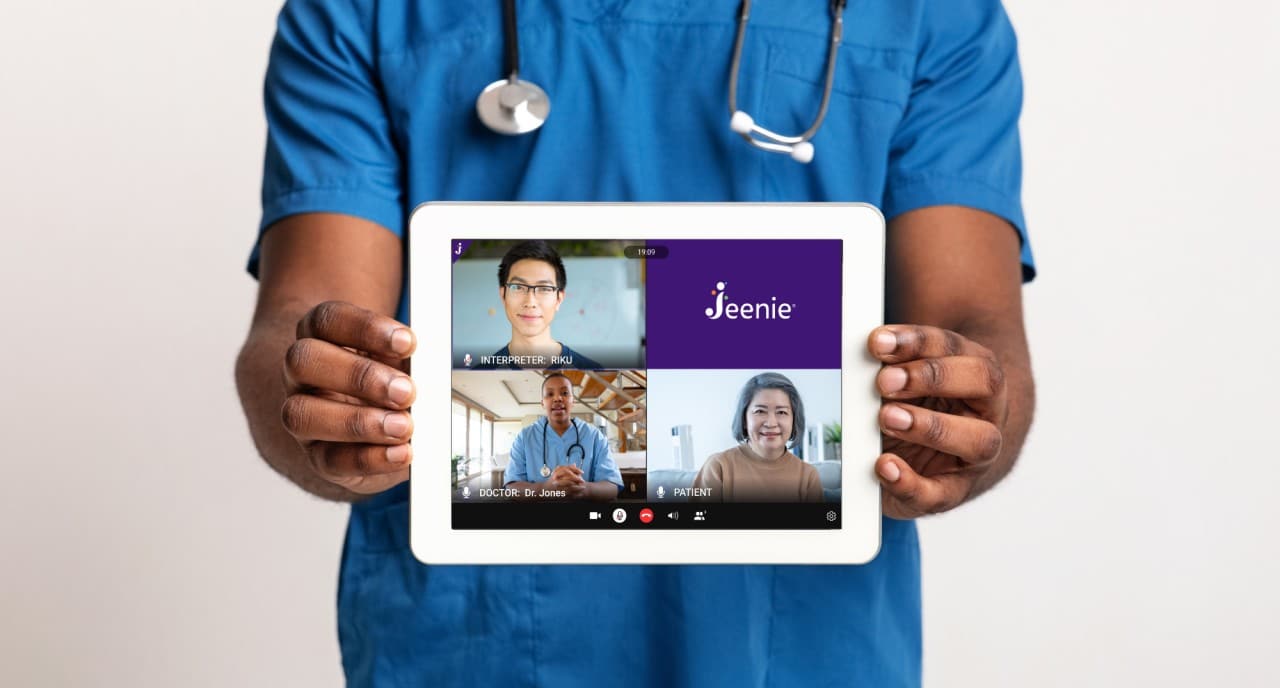See how language barriers in healthcare affect patients, healthcare professionals, organizations, and payors, and learn how interpreters can help.
One of the many things thrown into stark perspective by the COVID pandemic has been the dire consequences that result from inequitable access to quality healthcare. The pandemic exposed the current magnitude and impact of health inequity in our healthcare system, as entire communities of traditionally-underserved patient populations were tragically overlooked and left behind, resulting in disproportionate rates of infection and death.
In response to these realities, health equity has become a subject of renewed focus and commitment by care organizations and health systems, payors, and government institutions, including recent Executive Orders and Department of Health and Human Services initiatives to address health disparities. Yet despite renewed focus and commitment, significant obstacles to true health equity still remain.
One increasingly problematic obstacle to health equity is language barriers, a leading cause of health disparities that affects 1 in 12 patients in the United States who present with Limited English Proficiency (LEP)--a limited ability to speak, read, write, or understand English.
Here, we explore the impact of language barriers on health outcomes and the role that language services, especially interpreting, can play in advancing health equity for traditionally-underserved patient populations with LEP. We also look at how eliminating the preventable health disparities that arise due to language barriers can benefit healthcare professionals, hospitals, payors, and the U.S. healthcare system overall by making care more efficient and cost-effective.
Impact of Language Barriers for Patients with LEP
Hundreds of thousands of conversations take place each day between healthcare professionals and patients who don’t speak the same language. Unfortunately, although Federal law requires healthcare organizations to make professional interpreting services available on-demand for patients at their own expense, only a portion of these conversations actually involve a medically-qualified interpreter.
Critical Deficiency of Interpreting Services
Surveys demonstrate that only about 60% of hospitals and healthcare facilities actually offer interpreting services in multiple languages that are immediately accessible to patients when they walk in the door, without pre-scheduling or unreasonable wait times. Meanwhile, roughly 40% remain completely non-compliant with Federal law, often because interpreting services require too many steps and too much time to use, or are prohibitively expensive, especially for small and medium-sized healthcare organizations.
This landscape leaves patients with LEP facing obstacles to accessing quality care at every level of the system and in every aspect of care navigation, from primary care appointments, to inpatient care, to pharmacy visits, and beyond.
Severe Consequences for Patients with LEP

When a language barrier is present between patient and healthcare professionals, patient symptoms are misunderstood and misdiagnosed, leading to a cascade of negative outcomes for the patient.
Available clinical research on treatment and outcomes for patients with LEP shows that language discordance between patient and healthcare professionals results in misdiagnosis and mistreatment, poor adherence to treatment outcomes, higher rates of recurrence and hospital readmission, and disproportionately higher rates of infection, complication, adverse events, and even death. Patients with LEP also often lack access to specialized care and preventive care.
These effects resonate throughout the healthcare system, causing higher incidence of malpractice lawsuits for healthcare professionals, as well as lower HCAHPS scores, lower reimbursement rates, and lower efficiency ratings for hospitals due to poor patient outcomes and satisfaction.
Benefits of Effective Interpreting for Patients with LEP
 Fortunately, there is a research-backed solution to this problem: improved language access. Language access entails both translation of written words and interpretation of spoken and signed languages, but we'll focus here on interpretation.
Fortunately, there is a research-backed solution to this problem: improved language access. Language access entails both translation of written words and interpretation of spoken and signed languages, but we'll focus here on interpretation.
Qualified, professional interpreters play a crucial role in ensuring equal access to quality care for patients with LEP. Access to high-quality interpreters has been shown to improve patient care because healthcare professionals are able to better understand patient concerns, reliably diagnose symptoms, and build continuing rapport.
On the patient side, when patients are able to communicate effectively with healthcare professionals, patient health literacy, engagement, and trust increase as they acquire a more thorough understanding of their diagnosis. That trust and understanding results in better adherence to treatment protocols, expedited recovery, reduced recurrence and readmission, and a host of improved care outcomes.
These benefits roll up to the entire healthcare system through increased hospital efficiency ratings and HCAHPS scores, higher Value-Based Care reimbursement rates driven by improved patient satisfaction, and lower risk of malpractice resulting from miscommunication.
Moreover, better patient outcomes lower the overall cost of care per patient, which has system-wide benefits that extend beyond patient and healthcare professionals, to include the care facility, payors, and more.
Components of An Effective Interpreting Solution
While having an interpreter present in-person to facilitate communication between caregivers and patients is considered the most effective solution, it is an extremely difficult service to reliably provide across all of the languages that may present in a care setting at any given moment.
In addition to being logistically difficult to offer, in-person interpreting is also the most expensive option. The cost per hour is the highest among all interpreting modalities, as the healthcare organization is responsible for covering the cost of interpreter travel expenses, if applicable. In most cases, the contracting interpreting agency also requires a minimum block of time to be reserved, the industry standard for which is two hours--far exceeding the duration of most medical appointments.
Expanding Interpreter Access through Technology
Alternatively, myriad remote interpreting solutions are available to healthcare organizations for improving language access, but they are not all created equal. Many of the most commonly-referenced solutions on the market are built on top of antiquated technology like landline phones and call centers, and follow business models that involve multiple layers of middlemen resellers, which drives up the cost of services for the end user and drives down the pay (and consequently, the quality) of interpreters.
Fortunately, affordable, high-impact options like Jeenie are available. Built with modern, cloud-based technologies, these platforms are redefining the way interpreting services are provided to patients with LEP by focusing on:
- Quality: emphasizing direct relationships with experienced, highly-credentialed interpreters, as opposed to prioritizing profit by subcontracting middlemen and reselling marked-up services.
- Accessibility: making interpreters accessible on all of the most common devices, without the need for specialized, location-locked equipment.
- On-Demand: making interpreter access instantaneous, without the need to go through call centers or operators with complicated access codes.
- Mobility: making both video and audio interpreting available on mobile devices, so that users can access the service from anywhere and take it with them from one location to another.
- Ease of Use: reducing the number of steps for users to get to an interpreter on their device, so that it's as fast and easy as starting a FaceTime or WhatsApp call.
In addition to the above, an effective interpreting solution should also provide coverage not only for the most commonly-requested languages, including American Sign Language, but also for rare and indigenous languages, which are becoming increasingly more common as a result of recent migration trends.
An effective interpreting solution with these components in place will make a significant difference in improving access to quality care for patients with LEP and for Deaf Americans.
Expanding Interpreting for Greater Health Equity
 Despite a clear need for interpreting services in order to eliminate preventable health disparities for patients with LEP, there are still many challenges that must be addressed in order to achieve universal access to interpreting across the U.S. healthcare system.
Despite a clear need for interpreting services in order to eliminate preventable health disparities for patients with LEP, there are still many challenges that must be addressed in order to achieve universal access to interpreting across the U.S. healthcare system.
Limited resources and funding remains one of the biggest challenges, but this is largely driven by a lack of awareness among healthcare professionals and administrators about the benefits of using qualified interpreters, as well as a general tendency to treat language services like a commodity rather than as a fundamental component of high-quality care.
As the healthcare sector continues addressing the underlying causes of health inequity, eliminating barriers to equitable access faced by LEP patients by expanding the use of high-quality on-demand interpreting solutions must become a prominent part of the conversation.
As research on the differential impact of language access, and interpreting in particular, on health outcomes increases, there is significant potential for healthcare professionals and policymakers to make smart investments and implement intentioned policies that will enable all patients to receive the quality of care they deserve, regardless of the language they speak.










